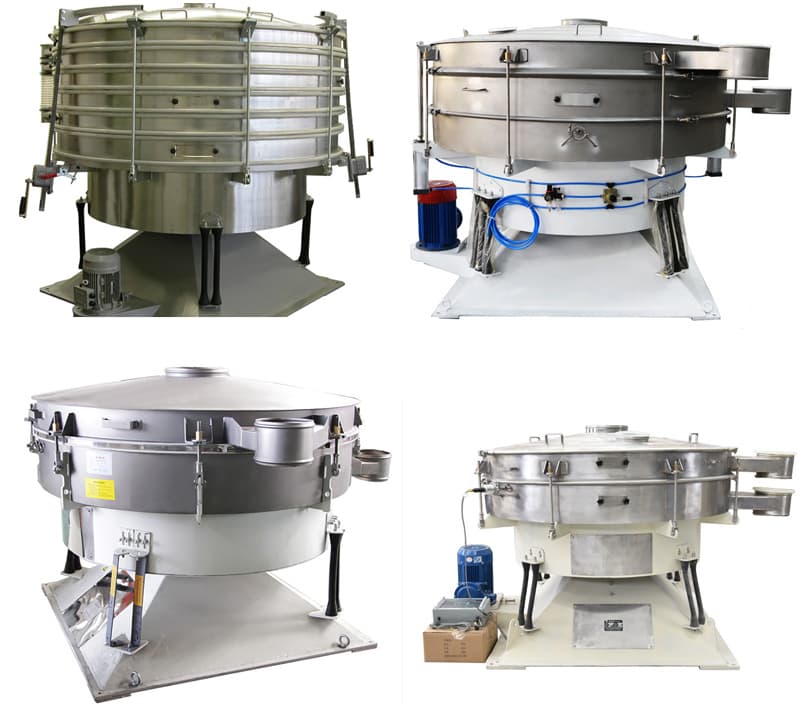Introduction: Revolutionizing Screening Processes
In today’s fast-paced industrial landscape, efficiency and accuracy are paramount. Industries ranging from pharmaceuticals to food processing rely heavily on screening technologies to ensure product quality and consistency. Among these technologies, tumbler screening has emerged as a versatile and efficient method for separating and classifying granular materials.
Understanding Tumbler Screening Technology
Tumbler screening, also known as gyratory sifting, employs a unique circular motion to sieve particles based on size and shape. Unlike traditional vibratory screeners, tumbler screens feature a gyratory motion that enhances the screening process’s effectiveness. The tumbling action facilitates a more thorough separation of materials, resulting in higher throughput and improved accuracy.
Advancements Driving Innovation
Recent advancements in tumbler screening technology have focused on enhancing performance, versatility, and ease of use. One significant development is the integration of intelligent automation and digital monitoring systems. These innovations enable real-time monitoring of key operational parameters, such as tumbler screening machine intensity and screen efficiency, optimizing the screening process and minimizing downtime.
Precision Engineering for Superior Results
Another area of innovation lies in precision engineering and material selection. Modern tumbler screeners incorporate high-quality materials and advanced manufacturing techniques to ensure durability and reliability. Enhanced design features, such as adjustable deck angles and customizable screening parameters, offer greater flexibility to adapt to diverse screening requirements.
Efficiency Redefined: Energy-Saving Solutions
In response to growing environmental concerns and escalating energy costs, manufacturers are prioritizing energy-efficient solutions. Advanced drive systems and innovative motion control technologies minimize energy consumption without compromising performance. By optimizing power usage and reducing waste, these eco-friendly designs align with sustainable manufacturing practices.
Customization for Diverse Applications
The versatility of tumbler screening technology extends beyond standard applications. Manufacturers now offer customizable solutions tailored to specific industry requirements. Whether screening pharmaceutical powders, food ingredients, or recycled materials, tumbler screeners can be adapted to handle a wide range of products with precision and efficiency.
Enhanced Product Quality and Consistency
The primary goal of any screening process is to ensure product quality and consistency. With advanced tumbler screening technology, manufacturers can achieve unparalleled levels of accuracy and reliability. By minimizing contamination and eliminating oversized or undersized particles, tumbler screeners play a crucial role in maintaining product integrity and meeting stringent quality standards.
Future Trends and Outlook
As industries continue to evolve, the demand for innovative screening solutions will only grow. Future trends in tumbler screening technology are likely to focus on integration with digitalization and Industry 4.0 principles. Enhanced connectivity and data analytics capabilities will enable predictive maintenance and proactive process optimization, further improving operational efficiency and productivity.
Conclusion: Pioneering the Future of Screening
Innovation in motion is at the heart of tumbler screening technology’s evolution. By embracing cutting-edge advancements in automation, precision engineering, and energy efficiency, manufacturers are revolutionizing the screening process. With customizable solutions tailored to diverse applications and a relentless focus on product quality and consistency, tumbler screeners are poised to shape the future of industrial screening for years to come.
Tumbler screening technology, also known as tumbling screening or tumbling sieving, is a method used for particle separation and size classification in various industries. It involves a cylindrical sieve/screen that rotates along its axis, causing the particles to tumble and move in a complex pattern. As the material tumbles, finer particles tend to settle into the voids created by the larger particles, allowing for efficient separation based on size.
Here’s how the process typically works:
- Loading: The material to be screened is loaded into the cylindrical sieve/screen, usually through a feed hopper.
- Tumbling Motion: The sieve/screen is set in motion, typically through a motorized mechanism. This motion can be rotary or gyratory, depending on the design of the tumbler screening machine.
- Separation: As the material tumbles inside the sieve/screen, particles smaller than the desired size pass through the screen mesh or perforations, while larger particles are retained on the screen surface or discharged at the end of the cylinder.
- Multiple Deck Screening: Some tumbler screening machines have multiple decks or layers of screens, allowing for the simultaneous classification of particles into multiple size fractions.
- Cleaning: Depending on the material being screened, the tumbler screening machine may include mechanisms for cleaning the screens, such as brushes or ball cleaners, to prevent blinding or clogging of the screen mesh.
Tumbler screening technology offers several advantages:
- High Efficiency: The tumbling motion of the sieve/screen enhances the screening efficiency, allowing for accurate separation of particles.
- Gentle Handling: It is suitable for fragile or delicate materials since the tumbling action is less aggressive compared to other screening methods like vibration.
- Versatility: Tumbler screening machines can handle a wide range of materials, including dry bulk solids, powders, granules, and even some liquids.
- Minimal Maintenance: These machines are often designed for easy maintenance, with quick access to screens for cleaning or replacement.
Tumbler screening technology finds applications in industries such as pharmaceuticals, food processing, chemical processing, mining, plastics, and recycling, where accurate particle size classification is crucial for product quality and process efficiency.
Top of Form

